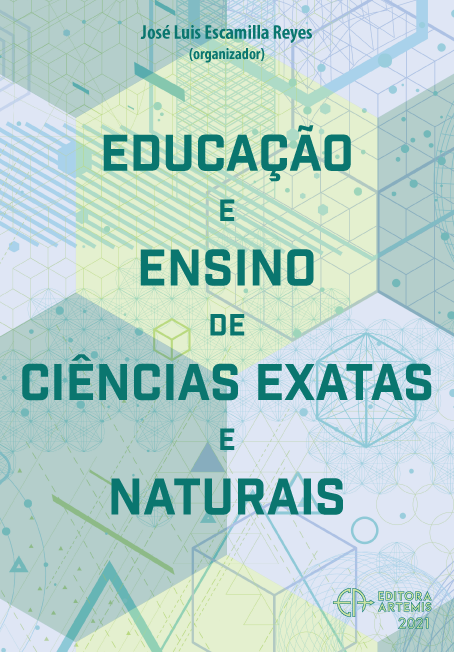
COMPETÊNCIAS MÍNIMAS DE ESTUDANTES DE MEDICINA PARA OBTENÇÃO DE VIAS AÉREAS DEFINITIVA EM DIFERENTES SEMESTRES DO CURSO
Estudantes de medicina ao se formarem devem ser capazes de abordar a via aérea de um paciente. A intubação orotraqueal é o método mais eficaz para isso, porém, é uma habilidade complexa que exige prática e domínio clínico, sendo que a capacidade de executar uma intubação bem sucedida é perdida rapidamente ao longo do tempo, por isso a importância da educação continuada ao longo do exercício médico. A simulação de alta fidelidade como técnica de aprendizado tem sido empregada no ensino médico desta competência, por fornecer um ambiente de aprendizagem seguro, através da aprendizagem experiencial e prática deliberada. O objetivo geral do presente trabalho foi identificar as competências na obtenção e manutenção de vias aéreas definitiva em diferentes níveis de aprendizado em alunos do curso de Medicina do CESUPA. Método: Trata-se de uma pesquisa transversal, documental e analítica, realizada nos anos letivo de 2016 e 2017. Participaram 420 alunos do 8o ao 11o semestres do curso. Foram analisadas cinco competências, a partir dos checklist aplicados no OSCE: 1. Biossegurança (uso de EPI’s) 2. Checar/Testar o material 3. Execução da Técnica de IOT 4. Solicitação de Sedação 5. Sedação - drogas com dose. Resultados: O percentual de alunos que utilizou todos os EPIs variou de 68 a 81%. Quanto a checagem ou testagem dos materiais, alunos do 9º período obtiveram percentuais de acerto de aproximadamente 90% em cada item. Em relação a Solicitação de Sedação, alunos do 9º período obtiveram o menor percentual de acertos (62,39%). Alunos do 11º período apresentaram o maior percentual de acertos (93,26%) e os do 8º período tiveram um percentual de acertos superior aos alunos do 9º e 10º períodos. Quanto a utilização de drogas sedativas, o índice médio de acertos dos alunos do 11º período, foi de 75%, a sequência de utilização das drogas foi a mesma encontra na literatura. Comparando a evolução dessas competências entre os alunos do 8º e 11º períodos, observou-se que não houve diferença quanto ao uso de EPI. Itens como “Checar/Testar o material”, “Execução da Técnica de IOT” e “Solicitação de Sedação” apresentaram significância estatística com melhora dessas competências. Mesmo com essa evolução, foi detectado que existe uma quebra na sequência de aprendizado dos alunos do 10º período. Portanto, sugere-se a introdução de laboratórios de simulação realística no 10º período acadêmico.
COMPETÊNCIAS MÍNIMAS DE ESTUDANTES DE MEDICINA PARA OBTENÇÃO DE VIAS AÉREAS DEFINITIVA EM DIFERENTES SEMESTRES DO CURSO
-
DOI: 10.37572/EdArt_1712214912
-
Palavras-chave: Estudantes de medicina. Educação baseada em competências. Intubação.
-
Keywords: Medicine students. Skills-based education. Intubation.
-
Abstract:
Medicine students after graduation should be able to approach the airway of a patient. Orotracheal intubation is the most effective method for this, but it is a complex skill that requires clinical practice and mastery. Once that the ability of a successful intubation is lost quickly over time, the importance of continuing the education through medical practice is paramount. High fidelity simulation as a learning technique has been employed in medical teaching of this competence by providing a safe learning environment through experiential learning and deliberate practice. The general purpose of the present work was to identify the competences in the acquisition and assurance of definitive airways in different levels of learning of the students at the Medicine Course of CESUPA. Method: This is a cross- sectional, documentary and analytical research accomplished in the periods from 2016 to 2017. There were 420 students participating from the 8th to the 11th semesters of the course. Five competencies were analyzed from the checklists applied in the OSCE: 1. Biosafety (use of PPE) 2. Check / Test the material 3. Execution of the orotracheal intubation technique 4. Sedation request 5. Sedation - drugs and dose. Results: The percentage of students who used all the PPE ranged from 68% to 81%. As for the checking or testing of the materials, students from the 9th period obtained percentages of accuracy of approximately 90% in each item. In relation to the request for sedation, students in the 9th period had the lowest percentage of correct answers (62.39%). Students in the 11th period had the highest percentage of correct answers (93.26%) and the students from the 8th period had a percentage of correct answers higher than the students from the 9th and 10th periods. As for the use of sedative drugs, the mean number of correct answers from the students in the eleventh period was 75%, the sequence of the drugs used were the same found in the literature. Comparing the evolution of these competences among students from the 8th and 11th periods, it was observed that there was no difference in relation to the use of PPE. Items such as "Check / Test Material", "Execution of Orotracheal Intubation Technique" and "Sedation Request" presented statistical significance with improvement of these competencies. Even with this evolution, it was detected that there is a break in the sequence of learning of the students from the 10th period. Therefore, we suggest the introduction of realistic simulation labs in the 10th academic period.
-
Número de páginas: 15
- Kenya de Sales Flamino
- Milena Coelho Fernandes Caldato

